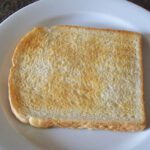Young adults who regularly participate in sport activities during their childhood and early teens are more likely to have stronger bone density in their early 20’s, new research led by Curtin University has found.
The research, published in the Journal of Bone and Mineral Research, examined data from The Western Australian Pregnancy Cohort (Raine) Study and found that young men and women with a history of consistently participating in sport had stronger and denser bones, compared to those who never participated in or dropped out of sport.
Lead author Dr Joanne McVeigh, from the School of Occupational Therapy, Social Work and Speech Pathology at Curtin University, said the development of strong and healthy bones during childhood was important, as it could result in a lower risk of bone fractures later in life.
“Early childhood and adolescent years are critical for bone growth, as almost one-half of the amount of bone laid down during this period will be lost after the age of 50. By participating in sports at a young age, it is expected that our bones will adapt to changes and increases in mechanical loading,” Dr McVeigh said.
“Our research aimed to investigate the relationship between physical activity during childhood and adolescence and the impact this had on bone mass in young adulthood, while also taking into account other factors known to influence bone mass including calcium intake and vitamin D.
“After considering these factors, we found a strong connection between young males and females who participated in organised sport during childhood and stronger bone mass, meaning that those who gain optimal peak bone mass in young adulthood were more likely to have greater long-term benefits.”
Dr McVeigh explained the research findings highlighted the importance of early participation in sport for young children for greater bone development.
“As the development of maximum bone mass is during young adulthood, our findings recommend that early sports participation can help prevent osteoporosis and age-related fractures,” Dr McVeigh said.
“Further research is needed to assess the relationship between the two factors, but targeted messages to young males and females that discourage dropping out of sport and encourage joining sport may be important.”
The study, which involved participants from the Raine Study, included 2,900 pregnant mothers who were recruited into the Raine Study between 1989 and 1991, with some of the mothers followed up at 24, 28 and 38 weeks gestation and the families then continuing with follow-up assessments of their babies. Another 2,868 babies remained with the study and were examined on the first or second day after birth. Since then, the ‘babies’ born into the study have been followed up at one, two, three, five, eight, 10, 14, 17, 18, 20, 22, 25, 27 and now 28 years of age.
The research was co-authored by researchers from the School of Physiotherapy and Exercise Science at Curtin University, The University of Western Australia, Sir Charles Gairdner Hospital, University of Witwatersand in South Africa, and University of Arkansas in the US.
The research is titled, ‘Organised sport participation from childhood to adolescence is associated with bone mass in young adults from the Raine study.’


